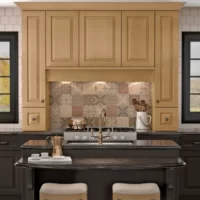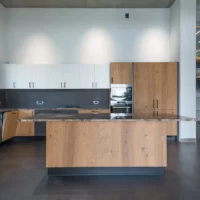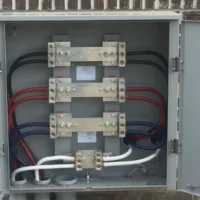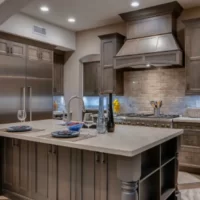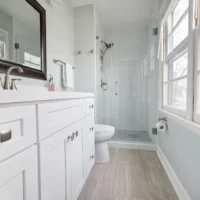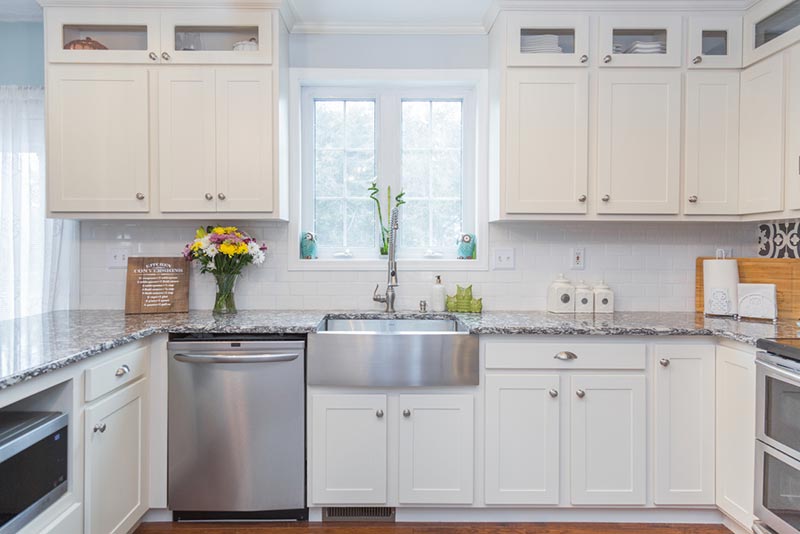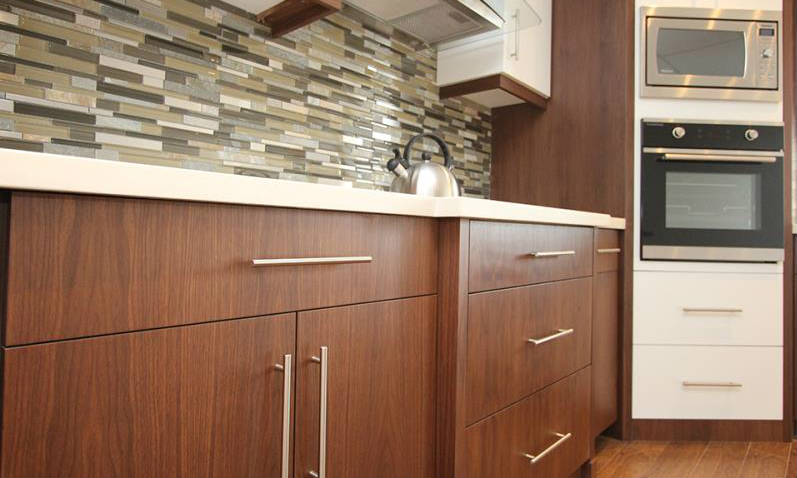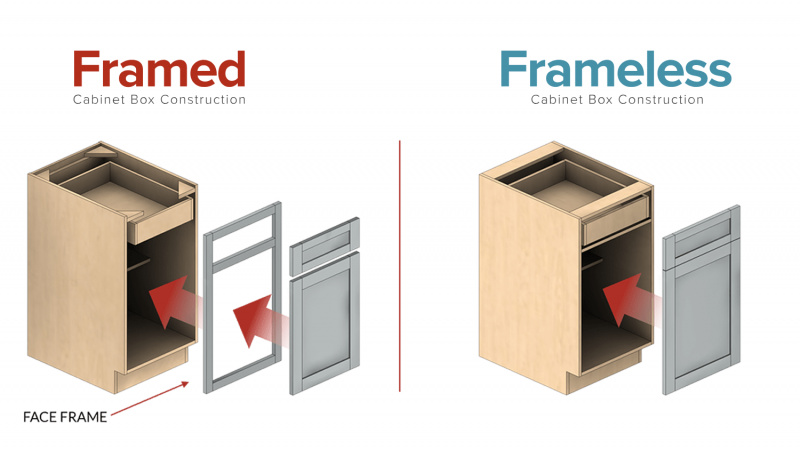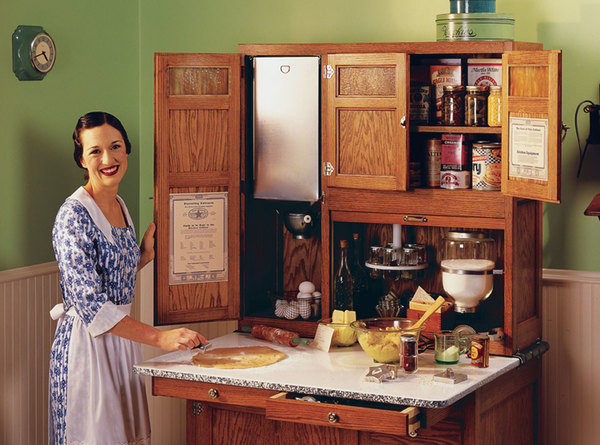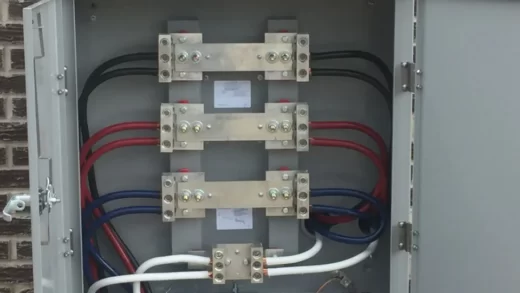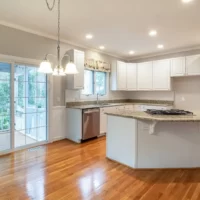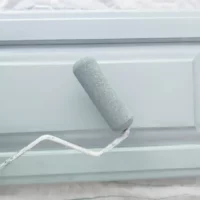People frequently worry about the decor of an office or workspace and wonder if you can place a mini-fridge in a cabinet or closet. How to Put a Mini-Fridge in a Cabinet?
You must leave enough room on all sides of the mini-fridge for safety when storing it in a cabinet.
Having a cold beverage close at hand is one of the many wonderful conveniences that many people appreciate, especially in an office or workspace. A mini-fridge close by is the answer for many of these installations.
We will go over how to properly install a mini-fridge in a cabinet and the safety and usability issues you should be aware of if the refrigerator is not properly ventilated. This will guarantee that the fridge’s contents stay chilled and keep your electricity bill from skyrocketing.
Table of Contents
How to Safely Put a Mini Fridge in a Cabinet?
A mini-fridge can be easily inserted into a cabinet or wardrobe, but proper spacing and airflow must be considered. These are the steps you should follow to ensure the fridge is safely installed:
- Measure fridge and cabinet dimensions
- Remove shelving if necessary
- Create openings for fridge wiring and ventilation
- Run power cords through openings
- Keep fridge plugged in
These are the general instructions for installing a mini-fridge, but depending on the specific fridge, you might need to make specific adjustments.
1. Measure Fridge and Cabinet Dimensions
You should make sure that the cabinet or wardrobe space is wider and larger than the fridge in order to allow for adequate ventilation. By doing so, you’ll give your refrigerator some breathing room and enable the heat it produces to escape into the air rather than condense around it. To promote better airflow, leave at least 2 to 3 inches of space on each side.
Shelving that is placed so closely against it is not allowed because the two-inch buffer rule is not followed. This additional room will aid in ventilation, but it won’t always be a solution; in order for the fridge to operate as effectively as possible, there often needs to be more openings.
In order to prevent overheating, it is best to have a side of the refrigerator that can access a space that is open. It’s best to lift the refrigerator off the cabinet’s base because air can also escape from the bottom of the appliance. Small rails or material for the fridge’s feet to stand on can be used for this.
2. Remove Shelving If Necessary
The refrigerator should ideally be installed at the base of the cabinet, and any other shelving that might be obstructing airflow should be taken down. The shelving should be relatively easy to remove from the inside of the majority of cabinets and wardrobes.
If you want to mount these shelves somewhere other than just inside joints, you might need a drill or a screwdriver.
If the shelving above the refrigerator is not necessary, you might want to remove it to improve the airflow and heat dissipation in the cabinet.
3. Create Openings for Fridge Wiring and Ventilation
As much space as possible should be left around the refrigerator to ensure its proper operation and safety. However, you might want to think about adding more openings to allow heat from the refrigerator to escape into the surrounding air. To allow the heat to escape, the back of many refrigerator cabinets will have an opening.
You might have to take out some of the cabinetry or make ventilation holes if the refrigerator’s back does not already have any openings. There are many tools that can be used for this, but a small reciprocating saw can make a precise cut to let the power cord pass and release heat.
4. Run Power Cords through Openings
If an extension cord needs to run behind the cabinetry, you must first determine where the power outlets are in relation to the refrigerator. Check to see that the cord is not being pulled too tightly as this could cause the outlet to become damaged or the cord to become unplugged. Unsecured plugs have the potential to spark or start a fire.
You should take into account the additional space required to plug in the refrigerator because you won’t want to back it up against the walls.
5. Keep Fridge Plugged In
To ensure that food is kept cold and the fridge can operate at its best, it should always be plugged in when it is in the cabinet. It will use more energy when trying to maintain proper temperature regulation if it is frequently unplugged. If the refrigerator is louder than usual, there may be a ventilation problem. When heat cannot be properly released, the refrigeration unit has to work harder.
To store food safely, refrigerators must be kept below 40 degrees Fahrenheit. Set it to this position and check to see if the refrigerator is operating properly.
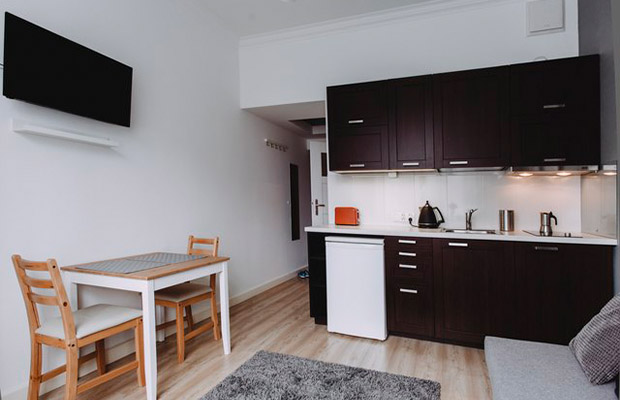
Keeping Your Minifridge Cool and Comfortable
Your mini-fridge needs lots of airflow to function effectively, just like your kitchen’s large refrigerator. Keep in mind that your mini-fridge’s job is to transfer heat from the inside to the outside air.
How you control the airflow inside and around the refrigerator will determine whether you can put any refrigerator in an enclosed space. If there is insufficient airflow, the refrigerator must run longer to transfer heat. The refrigerator will live less time if it is used too frequently.
Each mini-fridge manufacturer has specific guidelines and minimum demands for the area surrounding the appliance and the ventilation needed for airflow. Make sure the space complies with the manufacturer’s requirements before installing your mini-fridge there.
Safety and Functional Concerns
With little chance of overheating or danger, storing a mini-fridge in a cabinet or wardrobe is safe to do. Your cabinet may become uncomfortable to touch from the overheating or suffer surface damage. To reduce even the slight chance of fire, make sure there are no flammable materials nearby, such as paper.
The coils of a refrigerator should be kept clean, exposed wires should be covered, and dust accumulation in the back of cabinets should be cleaned frequently to reduce the risk of fire.
The actual operations of the refrigerator are the main issues with inadequate ventilation. To keep the fans on the back of the refrigerator cool, refrigerators must dissipate heat into the atmosphere.
They will have to exert more effort to maintain a cool interior if they are unable to control their body temperature. This could result in early malfunctions and increase energy consumption.
To optimize the safety and functionality of your fridge in a cabinet or wardrobe, you can do the following:
- Use a front-venting fridge: Consider purchasing a front-venting refrigerator if there is insufficient space or an adequate ventilation system for the fridge’s back or sides. The best outcomes occur when there is no door on the front, as this can allow the heated air to be released back into the room.
- Remove the backing on cabinets: It will be simpler to plug in and allow for the best ventilation to prevent overheating or damage to the fridge if the back of the cabinet where the fridge is located can be removed.
Additional Considerations
There are a few additional factors to take into account when setting up your mini-fridges space. Your mini-fridge installation will go much more smoothly if these preparations are made in advance.
Electrical Wiring
You’ll need a nearby electrical outlet for your mini-fridge. The majority of people who install a mini-fridge in a cabinet also install an outlet in the cabinet. This eliminates the need for an extension cord to be run from somewhere else into the cabinet. This has a much better aesthetic quality.
Clearances from Other Cabinets Or Furniture
when placing your mini-fridge in a cabinet or beneath a countertop. Make sure there is enough space for the mini-fridge door to swing. It may be difficult to put items in and take them out of the mini-fridge if it is placed too deeply inside a cabinet because the door may not fully open.
Don’t Leave Carpet under the Mini-Fridge
Do not install or leave carpet in the cabinet if your mini-fridge is directly on the floor underneath it. A mini-fridge’s ability to circulate air effectively can be severely hampered by thick carpet. The mini-fridge may have to work harder to maintain its cool as a result. The coils may become clogged with carpet lint, which will only worsen the situation. To make your mini-fridge run more smoothly, get rid of the carpet.
Read More:
FAQs
How Do You Hide a Mini Fridge?
Place your mini fridge against the wall in front of an outlet so that the cord is hidden when it is plugged in. Place a couch or chair next to the refrigerator. With a pretty tablecloth with lining, cover the refrigerator. This makes the refrigerator into a pretty side table.
What Can I Put My Mini Fridge On?
This is due to the fact that a carpet will trap heat and obstruct airflow, causing your mini fridge to overheat. So it’s best to leave some space between the bottom of your fridge and the ground. In this case, the best thing to do is to ensure that you place your fridge on hardwood, plastic, or tiled flooring.
Can I Build a Cabinet Around My Fridge?
The good news is you can build your own fridge cabinet without spending a ton of time or money. We consistently engage in it. It’s two pieces of cabinet-grade plywood, held together on the back with some 1x4s, with an “over the fridge” cabinet at the top front.
Final Words: Ventilate Your Mini-Fridge for Safe and Proper Use
A mini-fridge could be mounted underneath the counter. The preparation you make beforehand to enable the mini-fridge to function normally and safely is the key to installing a mini-fridge in these locations.
You can store your fridge safely in a cabinet or wardrobe as long as it has space to breathe on all sides. When these needs are met, there is very little chance of a fire.
The fridge will work much harder than it needs to if there isn’t a larger space for the hot air to go, that’s the only thing to worry about. Although there is no safety risk, this might lead to higher energy consumption.
Read Next: How To Remove Kitchen Cabinets?




